10 Top Tourist Attractions in Vietnam
Most travelers to Vietnam are attracted by the country’s wonderful natural beauty: From the green rice fields in the north to the fascinating bustle of the Mekong Delta in the south. Vietnam, however, is also a country with a long history and ancient traditions. It has many historic attractions and old temples.
The combination of vibrant culture, rich history, world-renowned cuisine and breathtaking landscapes makes Vietnam a bucket-list destination for many tourists.
Below is an overview of the most amazing tourist attractions in Vietnam - places that truly showcase the diversity and charm of this Southeast Asian gem.
10 Top Tourist Attractions in Vietnam
1. Nha Trang
Nha Trang is Vietnam’s most popular seaside resort town located along the second most beautiful bay in the country. It features beautiful beaches with fine and clean sand and clear ocean water with mild temperatures.
The city has about 300,000 inhabitants and is more lively and urban in character than other beach destinations like Mui Ne and Phu Quoc. It’s also the scuba diving center of Vietnam.
Visitors can explore the iconic Po Nagar Cham Towers, relax in the Thap Ba hot mineral springs, or take a boat tour to the nearby islands such as Hon Mun and Hon Tam.
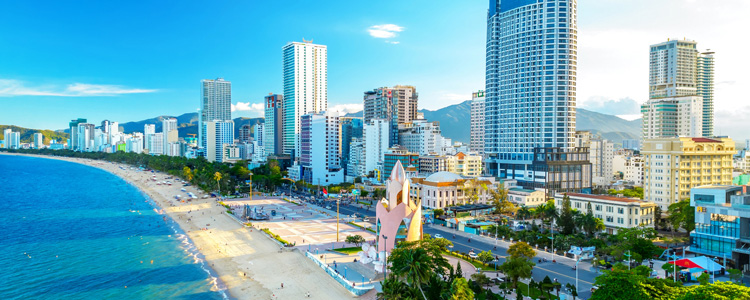
2. Cu Chi Tunnels
The Cu Chi Tunnels are an immense network of connecting underground tunnels located about 40 km northwest of Ho Chi Minh City (Saigon). The tunnels were used by Viet Cong guerrillas as hiding spots during the Vietnam War and were the base of operations for the Tet Offensive in 1968.
This complex also includes living quarters, kitchens, weapon storage areas and even schools, making it a full-fledged underground city.
The tunnels have become a popular tourist attraction and visitors are invited to crawl around in the safer parts of the tunnel system.
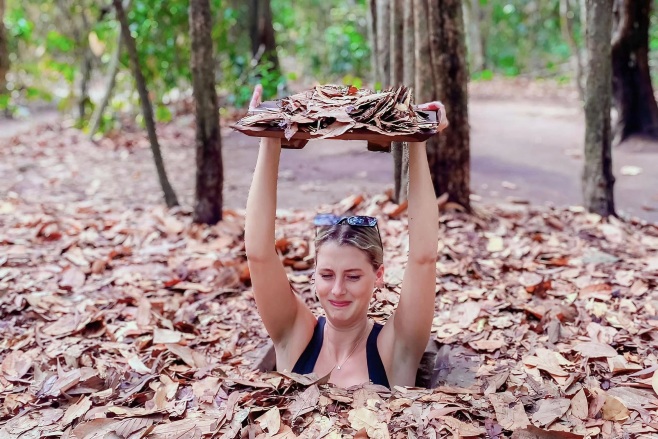
3. Mekong Delta
The Mekong Delta is the region in southern Vietnam where the Mekong River approaches and empties into the sea. It is a very rich and lush area, covered with rice fields, that produces about half of the total of Vietnam’s agricultural output.
Known as the "Rice Bowl of Vietnam", the Delta is home to floating markets like Cai Rang and Phong Dien, where locals trade fruits, vegetables and other goods directly from their boats.
Subsequently, life in the Mekong Delta revolves much around the river and all the villages are often accessible by river rather than by road.
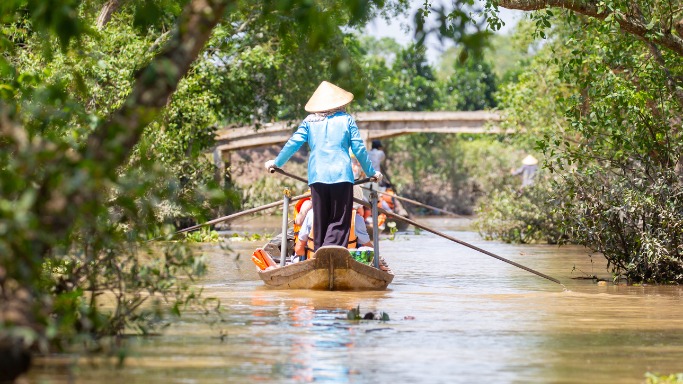
4. Mui Ne
The formerly little-inhabited beach south of the fishing village of Mui Ne has seen some serious development in the last 15 years. Due to strong sea breezes it is a popular destination in Vietnam for kite- and windsurfing.
Mui Ne is also famous for its Fairy Stream, a shallow stream that winds through red sand dunes and limestone formations, creating a surreal walking experience.
No trip to Mui Ne is complete without a trip to the famous sand dunes located a short distance north of the town. The vast sandy expanse provides some great panoramic views especially during sunset.
5. Sa Pa
Sa Pa is a town in northwest Vietnam not far from the Chinese border. Rice terraces can be found in the Muong Hoa valley between Sa Pa town and the Fansipan Mountain, on a backdrop of thick bamboo woodlands.
Fansipan, known as the "Roof of Indochina", is the highest mountain in Vietnam and can be reached via a scenic cable car.
Local mountain people, the Hmong, Giay, Dao, Tay and Giay, grow rice and corn on these paddy terraces, along with vegetables.
6. Phu Quoc
Located in front of the Cambodia coast, Phu Quoc is the largest island in Vietnam. Phu Quoc is what Phuket would be if it hadn’t been overrun by development.
The island now features luxury resorts, a world-class safari park (Vinpearl Safari) and the Sun World Hon Thom Nature Park accessible via the world's longest sea-crossing cable car.
The island features pristine tropical forests, undamaged coral reefs and great beaches. One of its beaches, named Bai Dai (Long Beach), was chosen by the ABC News as one of five beautiful and clean beaches.
Phu Quoc is famous for producing the best nuoc mam or fermented fish sauce in the world.
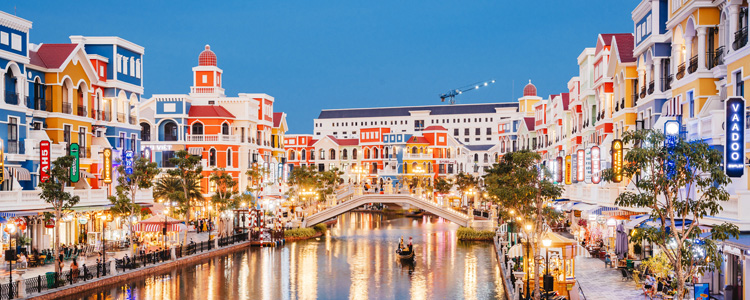
7. Hoi An
This fishing-village-turned-tourist-attraction is situated on the coast of the South China Sea. Hoi An has been an international port from the 16th century although the serious shipping business has long since moved to the city of Da Nang.
The town is particularly magical at night, with colorful lanterns lighting up the streets and the Thu Bon River, offering boat rides under the stars.
The heart of the city is still the Old Town, full of winding lanes and Chinese-styled shops. It is sometimes called the “Venice of Vietnam” because of the narrow canals that cut through part of the town.
8. Hoan Kiem Lake (Hanoi)
Located in the historical center of Hanoi, Hoan Kiem Lake is one of the major scenic spots in the city and serves as the locals’ favorite leisure spot.
Hoan Kiem means “returned sword” and the name comes from a legend in which King Le Loi was given a magical sword by the gods, which he used to drive out the invading Chinese.
Tourists can visit Ngoc Son Temple, situated on a small island in the lake, connected by a charming red bridge known as The Huc (Morning Sunlight Bridge).
Later he returned the sword to the Golden Turtle God in the lake.
9. Thien Mu Pagoda (Hue)
With seven stories, the Thien Mu Pagoda in Hue is the tallest pagoda in Vietnam. The pagoda overlooks the Perfume River and is regarded as the unofficial symbol of the former imperial capital.
The temple was built in 1601 during the rule of the Nguyen Lords. The initial temple was very simply constructed, but over time it was redeveloped and expanded with more intricate features.
It also houses a historic Austin car that carried the monk Thich Quang Duc to Saigon, where he famously self-immolated in protest.
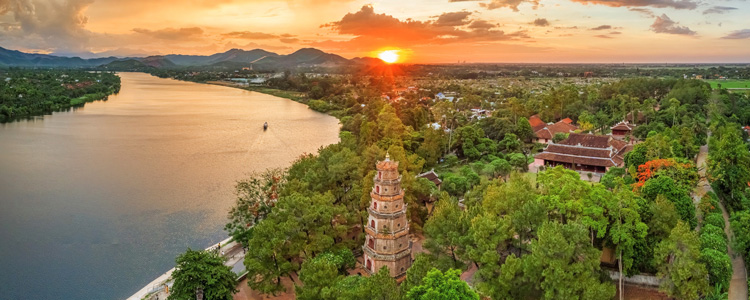
10. Ha Long Bay
Ha Long Bay is situated in north Vietnam round a 120 kilometer long coast line and is literally translated as “Bay of Descending Dragons”.
The top tourist attraction in Vietnam, Ha Long Bay features thousands of islands, each topped with thick jungle vegetation, forming a spectacular seascape of limestone pillars.
The bay is also home to famous attractions like Sung Sot (Surprise) Cave, Ti Top Island and the floating fishing village of Cua Van.
Several of the islands are hollow, with enormous caves, others islands include lakes and some support floating villages of fishermen.
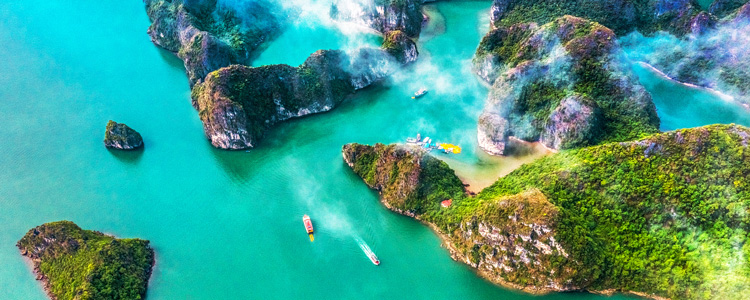
Conclusion: Discover the heart of Vietnam
From awe-inspiring natural wonders to culturally rich historical landmarks, Vietnam offers a vibrant tapestry of experiences that captivate every type of traveler. Whether you're wandering through the ancient streets of Hoi An, diving into the clear waters of Nha Trang, or marveling at the majestic limestone formations of Ha Long Bay, each destination tells a unique story.
Vietnam is not just a place to visit - it’s a place to feel, explore and remember. With its warm hospitality, world-renowned cuisine and an ever-growing list of attractions, this Southeast Asian jewel deserves a top spot on your travel bucket list.
So, whether you’re planning a short getaway or a long-term adventure, these top 10 tourist attractions in Vietnam will ensure your journey is unforgettable, meaningful and filled with extraordinary memories.
Related Articles
- Moc Chau: Highland paradise of tea hills & cultural adventures
- Team building and CSR activities in Vietnam: Visa services
- Honeymoon in Vietnam: Best romantic packages for couples
- Amanoi Resort in Vietnam: Luxury retreat in Vinh Hy Bay
- Six Senses resorts in Vietnam: Ninh Van Bay and Con Dao
- Con Dao Island: A historical and natural paradise in Vietnam
- Michelin Guide in Vietnam: Ho Chi Minh City, Da Nang, Hanoi
- Vietnam vs Thailand: A comparison for Southeast Asia escape
HOW CAN WE HELP?
APPLY WITH CONFIDENCE










